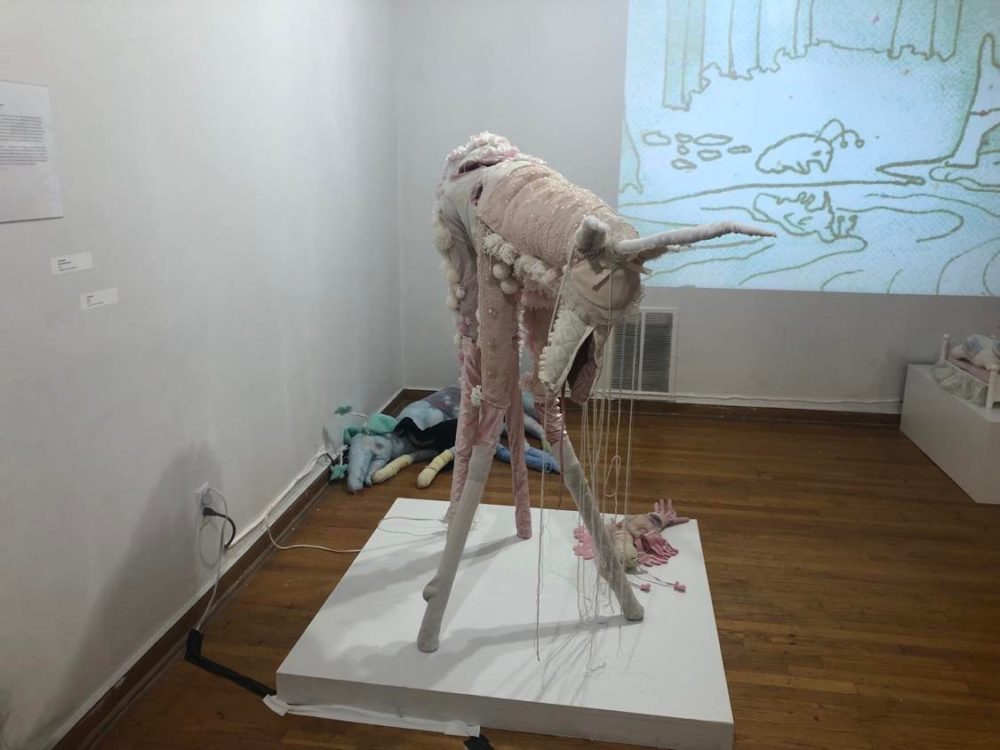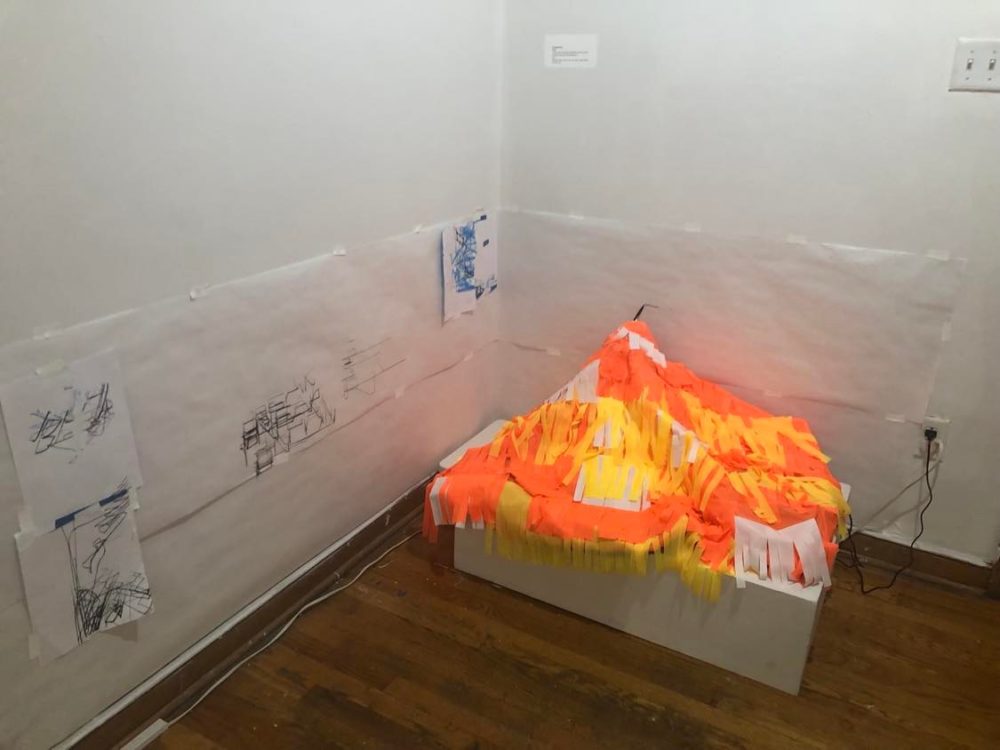The artists behind these bots aim to challenge some of the stereotypes associated with tech and bridge the industry gap between art and engineering.
The exhibit currently being hosted by the University City Arts League is the culminating project of the Robotics Art Residency at the GRASP Lab at Penn Engineering and the Weitzman School of Design at the University of Pennsylvania. Three artists were chosen for monthlong residencies where they collaborated with Ph.D. students at GRASP to put together robotic art pieces for the show.
This exhibit showcases the final pieces, but also sketches, videos and drawings of the artists’ processes and how they got to the final products.
The three artists are Kathleen McDermott, Nikkita Staggs and Sam Hensley. Staggs’ work focuses on the environment, including a robotic flower in bloom. Hensley’s work focuses on taking apart old toys and bringing them to back to life. McDermott’s pieces relate to the motions of robots, with one machine drawing lines on the wall.
These residencies were a one-off program funded by the 2020 Collaborative Provosts Interdisciplinary Grant from the Sachs Program for Arts Innovation. Diedra Krieger, lab coordinator at Kod*Lab within GRASP and primary organizer of the exhibit, said her team applied for the grant at the end of 2019, expecting to do the program the following spring. (Her collaborators included curator Angela McQuillan, and Orkan Telhan and Laia Mogas-Soldevila of the Weitzmann School of Design.)
But when the pandemic hit, their plans were postponed until this year.
Artists who applied for the program were asked to submit a proposal of the type of project they wanted to do and what they wanted to accomplish in the program. These proposals had to address a societal issue, Krieger said: “How are you using technologies or address essential education, labor and environment issues?”
The three artists came to Philly from Brooklyn, Nashville and Kentucky for a month each during spring 2022, working out of the GRASP Lab at Southwest Philadelphia’s Pennovation Center. They returned a few weeks ago to put together their final exhibitions.

Each came in with varying degrees of technology experience, and Krieger said she didn’t want to leave them to fend for themselves in the lab. Partnering each artist with a Penn Ph.D. student provided a point of contact and a technical mentor for each artist. That collaboration was mutually beneficial: While hard tech fields like electrical engineering and computer science do require creativity, “having an artist there just changes the dynamic in a way that you would never get in a lab situation otherwise.”
GRASP Lab Ph.D. student Diego Caporale, who co-mentored McDermott, agreed that both art and engineering require creativity. This experience allowed him to see how professionals in other fields solve problems.
“It was really nice to interact and work with someone creative who’s just constantly immersed in another side of the world, asking very different questions to the ones that I would ask,” he said, “and then need to be able to kind of work together toward some goal.”

GRASP Lab researcher Wei-Hsi Chen mentored Staggs, and shared a similar sentiment.
“I think there’s some miscommunication,” he said. “Artists think they don’t need to learn engineering and engineers think they don’t need art, but I think we both need them.”
University City Arts League Director Zoe Rayn Evans said she was happy to host this exhibit, as it’s been an opportunity to bring art and technology to the surrounding community, and to go beyond the space’s usual independent and small group shows. “Experiments in Robotic Gestures” allows visitors to get a behind-the-scenes peek into the work that happens in engineering labs that the general public doesn’t usually have access to.
“It’s nice to see this kind of stuff in a community space and open to the public and to have so much of the process as part of the exhibition,” she said. “I think it’s really unique.”
Krieger added that this exhibit provides “accessibility to robotics and what can robots do — and maybe change the perception of what people think of when they think of robots.”
“Experiments in Robotic Gestures” is open to the public for free at University City Arts League, 4226 Spruce St., Monday to Friday from 10 a.m. to 6 p.m. until Dec. 18.







